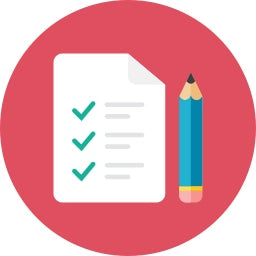Creating a website is one of the fastest ways to accelerate your small business. A sleek, modern site will help you find new customers, improve your user experience, and generate sales with an online store.
Creating your own website has never been easier. Website builders make it simple to design pages that represent your brand. They also come with business tools, like shipping services and online checkout, and marketing features, such as search engine optimization (SEO).
This post contains all the information you need to make a website for your business with Shopify or another website builder.
Table of contents
How to create a website with a website builder in 9 steps
- Decide on the purpose of your website
- Choose a website builder
- Choose a web host
- Pick a domain name
- Decide on a layout
- Add relevant pages
- Connect an ecommerce payment system
- Add business tools
- Preview, test, and publish your website
1. Decide on the purpose of your website
Before you begin creating your website, set some goals. What do you want to achieve by making a website? Developing a vision for your site will help you choose what features to work on first.
Common business website functions include:
- Selling physical or digital products
- Selling services
- Posting information about your company
- Expressing your brand
- Sharing updates and announcements in a blog
- Highlighting customer reviews
- Turning website visitors into leads
- Growing your audience
Once you’ve set your goals, you can make a plan for how to achieve them. If your goal is to sell physical products, for example, consider how you’ll organize your inventory, promote products, and process payments.
Developing a website is an ongoing task with no endpoint. So specific goals, followed by detailed plans broken into tasks, will help you build with purpose.
2. Choose a website builder
The fastest way to create a business website is with a website builder. Website builders are tools for designing web pages and adding features. They use drag-and-drop interfaces so you can design without coding knowledge.The best website-building software includes:
- Templates and themes to speed up creation
- Custom options
- A content library of images and videos
- Drag-and-drop design tools
- Optimization of your website, marketing, and sales
- AI content creation tools
As time goes on, you’ll likely want to upgrade your basic site with bespoke features. That could require altering your website’s HTML and CSS files. The best website builders should allow you to edit your code and take control if necessary.
Shopify website builder
You can use Shopify’s website builder to create all kinds of websites, not just online stores.
When you create a website on Shopify, you’ll get access to customizable, mobile-responsive themes and 24/7 live support to help you design your website, your way.
Once you’re ready to start selling or promoting your content, Shopify has everything you need to connect with your audience (no third parties required).
You can accept payments, capture leads and customer information, and automate email communications entirely within the platform.
Build your website with a Shopify free trial
Try Shopify before committing to a paid plan. Then get three months for just $1/month.
What are some other website builders besides Shopify?
Besides Shopify, popular website and ecommerce platforms include Wix, Squarespace, and WordPress.
Each platform offers different benefits, so think about the goals of your website and what features will be most helpful. Compare ease of use, design options, customization capabilities, pricing, and customer support.
Other drag-and-drop website editors include:
- Weebly
- 3dcart
- Volusion
- GoDaddy
3. Choose a web host
Every website is hosted on a server. Web hosts make space on servers for your site and all its accompanying data.
Choosing a hosting service provider can be challenging because each hosting company offers different payment plans with data transfer limits, domain email accounts, and storage. Plus, when you select a host, you’re not sure how fast you’ll grow or what services you’ll need going forward.
If you’re creating an online store, look for ecommerce hosts that offer:
- Unlimited bandwidth, so you’re never charged for website traffic as you grow.
- Payment Card Industry (PCI) compliance, to keep customer data safe and secure.
- Fast servers, so customers can load your website quickly, no matter where they are.
- Unlimited email forwarding, to save time and help your business look professional.
- Your own domain, so you can create and register a domain name for your website quickly.
Every Shopify plan comes with fast and reliable web hosting, including domain names, unlimited email forwarding, and unlimited bandwidth. Shopify’s servers are placed across the world, so users can load your website quickly, no matter where they are.
💡 Learn more about Shopify web hosting.
4. Pick a domain name
A domain name is your website’s digital address—it’s how people find you online. It gives your business credibility and, when picked with care, helps your site rank higher in search results for industry-related keywords.
When choosing a domain name:
- Keep it short and brand appropriate
- Select a top-level domain (TLD), if possible
- Consider country-specific domains (.ca, .co.uk, etc.)
- Include keywords related to your website
How to register your domain name
Domain names are stored on the domain name system (DNS), a global storage system. You’ll need to check if your business name or chosen site name is available as a domain.
You can check domain name availability with any hosting provider. Here’s Shopify’s domain name search tool.
If it’s free, you can register for the domain using a hosting service like Shopify, Google Domains, or GoDaddy. Because domain names are universal, every provider offers the same selection of names.
If your business’s name is already in use, get creative and choose a domain that expresses your brand. For example, Biko, an online fashion retailer, uses the domain ilovebiko.com. It’s relatable, clear, and puts customers in the right mindset once they arrive.
Other options for when your first-choice domain is taken include adding a suffix (e.g., storenameonline.com, storenamecanada.com) or using a different extension (e.g., storename.shop, storename.ca). Just remember: changing domain names once your website is established can cause SEO headaches, so choose wisely.
💡 Need inspiration? Use Shopify’s free domain name generator.
5. Decide on a layout
With hosting and a domain name, your website is ready to be built. The first stage of website design is finding the right layout and theme to match your content and brand.
Your website builder will likely offer free and paid themes you can install. Most themes are designed for specific use cases, such as blogging sites or themes for online stores.
The fit between your theme and website content doesn’t need to be perfect—you can edit colors and elements later on. But try to find a broad match when considering factors such as your brand, industry, and product catalog size.
The Shopify Theme Store contains more than 100 paid and free themes, each with distinctive styles and features. You can choose from themes created by world-renowned designers, including Happy Cog, Clearleft, and Pixel Union.
Every Shopify theme is customizable, user-friendly, and allows you to preview your storefront as you work on it.
How to choose a website theme:
Pick a theme with multiple variations
Many themes include various layout options, supporting even deeper levels of customization.
Look for built-in features.
Consider the features you need based on your website’s goals. For example, if you have lots of products, look for a theme with an auto-fill search bar. If you want to highlight awards and accolades, consider a theme with a media section.
Don’t choose themes based on colors or fonts.
While a color scheme that matches your brand is helpful, you can always update colors, fonts, and other visual details later.
Test different themes before committing.
You’re never stuck with a theme. If you discover something about a theme that doesn’t work for you (like how its design translates to phones), you can install a new one without recreating all your web pages.
If you need help designing your store, hire a Shopify Expert.
6. Add relevant pages
A relevant page on your website means different things depending on your business type.
Product and collection pages are necessary if you’re running an ecommerce site. You’ll want landing pages for your menu and reservations if you’re a restaurant owner. Real estate professionals will likely add a page to showcase their listing and a form to collect contact information.
Make an SEO content plan to rank your pages
Whatever pages and posts you add to your site, keep content relevant to your industry and niche. This begins the process of building authority within your area of expertise. As you upload content and visitors interact with your website, Google will place your website pages within its directory.
Tailoring your content based on your competition and becoming more valuable to visitors is a process called search engine optimization. You can optimize your content by matching it to popular search terms and keywords. Find keywords relevant to your website with a keyword planning tool.

Free Download: SEO Checklist
Want to rank higher in search results? Get access to our free, checklist on search engine optimization.
Get our SEO Checklist delivered right to your inbox.
Almost there: please enter your email below to gain instant access.
We'll also send you updates on new educational guides and success stories from the Shopify newsletter. We hate SPAM and promise to keep your email address safe.
Standard pages to create for your website include:
Homepage
A homepage is the entrance to your website. It communicates who you are and the services you provide. Use the homepage to guide visitors toward your key products and offerings.
Product pages
Product pages describe and prompt your goods, as well as provide information such as stock levels, reviews, and product variations for shoppers. Create a new page for each product or service you provide to make them individually searchable.
Contact page
A Contact page lets people get in touch if they have questions. You can include different channels for customer support, such as a contact form, or direct people to an FAQ.
FAQ page
On an FAQ page, you can answer common questions people have about your business. It’s great to encourage self-service to decrease the load on customer support teams.
About page
Build a page that tells your story and explains your site’s reason for existing. An About page helps visitors connect with your brand and builds trust. You can also add relevant information and links to your profiles across social networks.
Policy pages
No matter your business model, there are legal policies you’ll need to follow. For example, ecommerce stores need a return policy and a shipping policy.
Beyond these page types, aim to create pages that generate customer trust, such as blog posts, buyer’s guides, and independent reviews.
7. Connect an ecommerce payment system
Many businesses build websites to make sales. To achieve that goal, it should be as easy as possible for visitors to buy through your website. Whether you’re dropshipping or selling your own products, a seamless payment system is non-negotiable.
Luckily, today’s website builders typically come with native payment processing systems or ecommerce plug-ins that you can use to accept customer payments.
All Shopify plans include Shopify Payments, which lets website owners accept credit cards—no third-party apps necessary. You can also offer express pay options like Shop Pay, Google Pay, and PayPal, or let customers pay over time with Afterpay.
8. Add business tools
The Shopify App Store has more than 8,000 add-ons built to expand the capabilities of Shopify websites. These third-party applications can connect your website with social media and external sales channels, upgrade the quality of your content and page design, and streamline your shipping and fulfillment process.
Many other website builder platforms have similar libraries of extensions and integrations. You can find free Shopify apps to help:
- Build an email marketing list
- Find trending products to sell online
- Run Facebook ads
- Create lead-generation pop-ups
- Offer live chat support
- Create loyalty programs
- Integrate with online selling sites
- Add more payment gateways to your shopping cart
- Understand Google Analytics data
These business tools can unlock new opportunities for your website that improve your customers’ experiences and boost sales. It all comes down to finding the right apps and pricing for your business needs.
9. Preview, test, and publish your website
Creating a website for your business is the first step in establishing an online presence. Test your site thoroughly to make sure content loads correctly and all hyperlinks function. Run a quick user experience check and ensure your products and services are presented in the way you want.
Send your website to coworkers, friends, and family to ensure it loads quickly and correctly across different devices and internet connections.
Give it one last look to make sure everything is good. By following this step-by-step guide, your new website should be ready to go live!
💡Follow up with the complete guide on how to start an ecommerce business.
How to create a website for free with Shopify
If you want to create a website to sell products or promote your brand, you can start immediately with Shopify’s website builder.
Set up your site using Shopify’s three-day free trial. After that, continue building your website for $1 per month for the first three months.
Shopify specializes in commerce, so beyond its website builder, there are other features to help you grow your online or brick-and-mortar store.
Here’s how to get started.
1. Create Your Shopify Account
Head to Shopify and start a free trial. You’ll need an email address and a basic idea of why you want to build your website. If you need to, you can create a custom domain at a later stage.

2. Add basic site information
Once you’re in the store builder, you’ll see a menu on the left with links to various tools and features. Click Settings to customize your website’s name, time zone, and currency—or follow the setup guide to begin adding content to your site.

3. Choose your theme
Jump straight into adding products to your store, or set your site theme by clicking Customize Theme. All themes come with Shopify’s industry-leading checkout. By default, Shopify provides a theme for your store.
If you want a different look, click Online Store in the left sidebar and explore free themes. Select a popular free theme from the website builder. You can also head to the Theme Store for professionally designed paid themes. Pay attention to details and read reviews to find the best fit for your store.

4.Customize your theme
Once you’ve selected a theme, you may want to make some basic, site-wide changes to your color scheme or font selection. To do this, click Customize after selecting a theme and use the menu tools to edit page Sections or Theme Settings. Here, you can also set your site logo, layout, and other features.

5. Add pages and content
Stay in the live builder screen or head back to the setup guide to add pages, content, and a navigation menu to your website. Create content for About Us and Contact sections. Try publishing a blog post to share more personal or complex information.

6. Add products
Once your store design is ready, hit the Products button in the menu and begin filling in your product information. Follow the process to add titles, descriptions, prices, images, and videos. Keep products organized by creating collections and categories.
You can add your own products, digital products, and services, as well as third-party products to a Shopify website.

7. Add a payment method
Before customers can use your checkout, you’ll need to add a payment provider to your website. Within the Settings or Setup guide, head to Payments and activate Shopify Payments, PayPal, or another payment provider.
If you choose Shopify Payments, you’re automatically set up to accept all major payment methods.
8. Finalize your store—then continue building!
Place a test order to make sure everything’s working, then choose a plan to fully launch your website. As you become more familiar with the store builder, dive into shipping, marketing, analytics, and other core site features using the Settings menu.
Now that you’ve created a website for your business, what’s next?
Your website isn’t a static asset; it needs regular maintenance and evolution. Project updates, new features, and expanded content will help your site stay relevant and competitive.
Once you’ve established the basic elements of your site, you can develop bespoke features or target specific visitors.
💡 If you’ve built a Shopify store and are ready to monetize, read about how to get your first sale in 30 days


